8 oldest crowns in the world
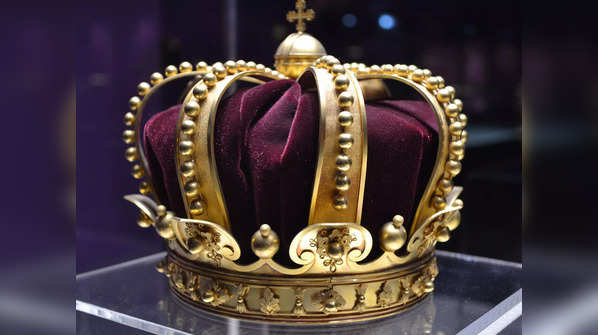
8 oldest crowns in the world
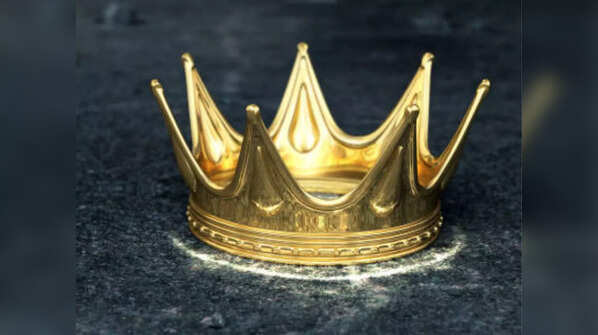
Golden Crown of Byblos
The Golden Crown of Byblos, found in modern-day Lebanon and dating back to around 1,800 BCE, is one of the oldest royal crowns known from the Near East. It was made of gold and represented the power and status of rulers in ancient Byblos, showing their wealth and importance in that region. This crown is of immense significance as it provides valuable insights about the early cultures and their skills in making beautiful and valuable artifacts and objects.
Image credit: iStock
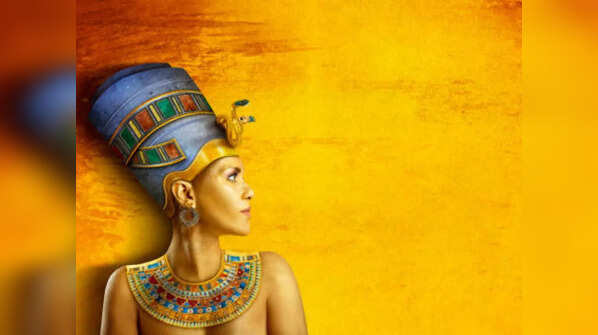
Crown of Lower Egypt and Crown of Upper Egypt
The Crown of Lower Egypt and the Crown of Upper Egypt, dating back to around 3,000 BCE, were ancient Egyptian crowns made from gold and precious stones. They were immensely significant, symbolizing the unification of Upper and Lower Egypt under one ruler. These crowns represented the consolidation of Egypt into a single kingdom governed by a pharaoh, demonstrating their authority and sovereignty over the entire Egyptian land.
Image credit: iStock
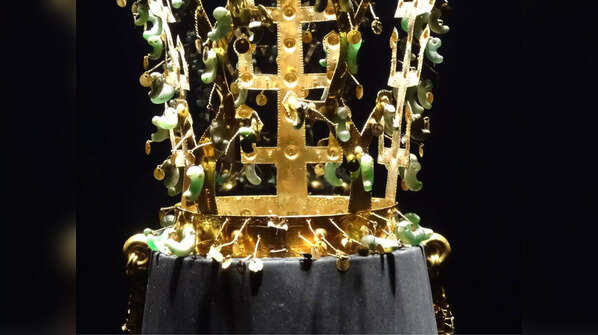
Golden Crown of Silla
The Golden Crown of Silla, crafted in ancient Korea from the 5th to 7th centuries CE, are famous for their detailed gold designs and use of jade decorations. These crowns, primarily made of gold with delicate patterns, symbolized royal power, wealth, and cultural elegance in Silla society. They are important symbols of Korean history and culture, representing both earthly authority and spiritual significance. Today, the Golden Crown of Silla is preserved and displayed at the Gyeongju National Museum in Gyeongju, South Korea, the former capital of the Silla Kingdom.
Image credit: worldhistory.org
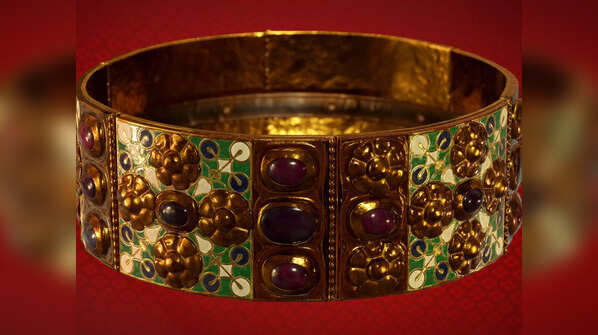
The Iron Crown of Lombardy
The Iron Crown of Lombardy is a medieval crown with a unique history. It is called the "Iron" Crown because it has a band made of iron inside, which is said to include a nail believed to be from the cross on which Jesus Christ was crucified. The outer part of the crown is made of gold and is adorned with precious jewels. This crown is of great significance as it symbolizes the authority of the kings of Lombardy and later the Kingdom of Italy. It was traditionally used in coronation ceremonies of the medieval kings, emphasizing their divine right to rule. The Iron Crown of Lombardy is an important artifact in European history, reflecting both religious and royal symbolism, and it remains an object of cultural and historical importance, now kept in the Cathedral of Monza, Italy.
Image credit: artstation.com
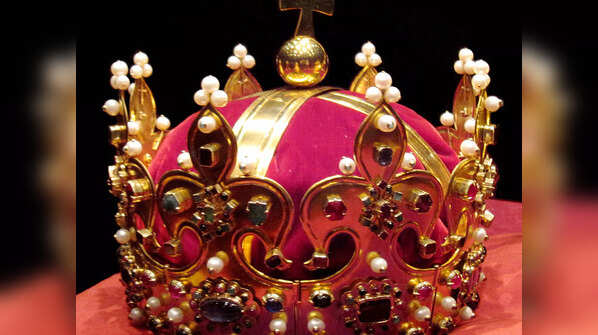
The Crown of Boleslaw I the Brave
The Crown of Bolesław I the Brave, also known as the “Polish Crown Jewels”, is a medieval royal crown made of gold and decorated with pearls, and precious stones. It dates back to the early 11th century. This crown is of immense importance, symbolizing the founding of the Kingdom of Poland and the coronation of its first king, Bolesław I. It represents royal authority and has been used in the coronations of other Polish kings. The Crown of Bolesław I the Brave is kept in the Wawel Cathedral in Krakow, Poland, where it is displayed as part of Poland's invaluable Crown Jewels, showcasing the nation's history and cultural heritage.
Image credit: wikipedia.org
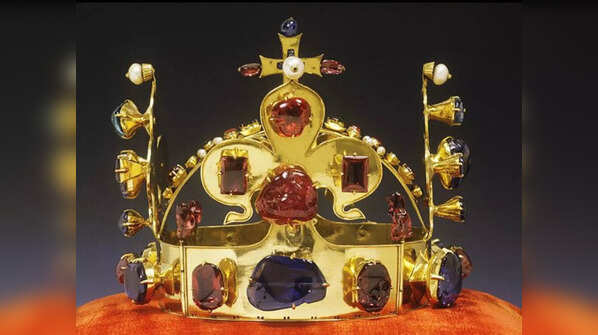
The Crown of Saint Wenceslas
The Crown of Saint Wenceslas, also known as the “Crown of Bohemia”, is a historical crown associated with the kings of Bohemia. It is named after Saint Wenceslas, the patron saint of Bohemia, who was a revered ruler in the 10th century. Made of precious metals like gold and decorated with beautiful and precious jewels, this crown is immensely significant as it symbolizes the sovereignty and Christian heritage of Bohemian kings. The Crown of Saint Wenceslas is currently kept in the Crown Chamber of Prague Castle in the Czech Republic. It remains an important cultural and historical artifact, representing the medieval kingdom of Bohemia and its royal traditions.
Image credit: thevintagenews.com
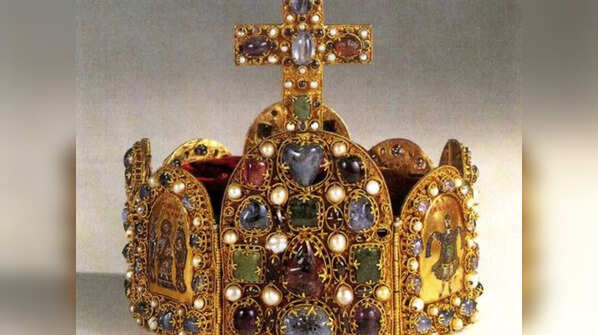
The Crown of Charlemagne
The Crown of Charlemagne refers to the medieval crown associated with Charlemagne, also known as “Charles the Great”, who was the King of the Franks and later crowned Emperor of the Carolingian Empire in 800 AD. This crown is historically significant as it symbolizes Charlemagne's authority as a powerful ruler in Western Europe during the early Middle Ages. This beautiful crown was made of gold and decorated with precious stones, reflecting the wealth and prestige of the Carolingian dynasty.
Image credit: hubert-herald.nl
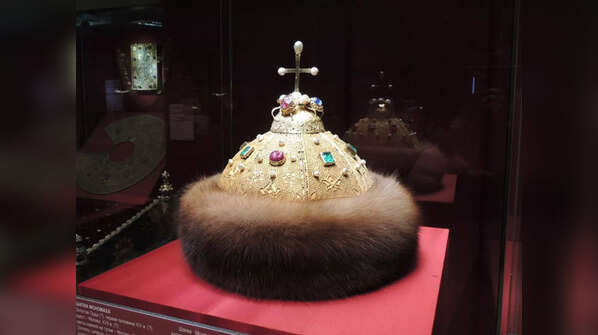
Monomakh's Cap
Monomakh's Cap, also known as the “Crown of Monomakh”, is a historical crown associated with Russian and Ukrainian royalty. It dates back to the 13th century and is made of gold, decorated with precious stones and pearls. This crown is of great significance, symbolizing the authority of the Grand Princes of Moscow and later Russian tsars. It was used in coronation ceremonies, signifying their legacy and power. Monomakh's Cap is an important artifact in Russian history, representing the continuity and heritage of the Russian monarchy. Today, Monomakh's Cap is preserved in the Kremlin Armoury in Moscow, Russia, where it is displayed as a symbol of Russia's medieval and imperial past.
Image credit: wikimedia.org
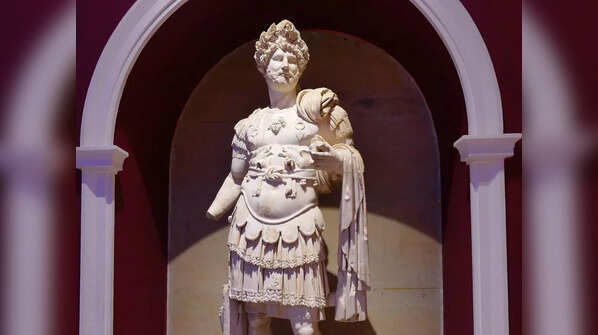
When did rulers begin the tradition of wearing crowns?
The tradition of monarchs wearing crowns dates back to ancient civilizations, where crowns were symbols of power, glory, and sovereignty. The earliest precursors to the modern crown were the diadems worn by Achaemenid Persian emperors. With the rise of the Roman Empire, these headpieces evolved into more elaborate forms, such as the radiant crown associated with the cult of Sol Invictus. Over time, crowns became intricate and symbolic, especially in medieval Europe, where they were used to assert a monarch’s divine right to rule. Crowns have been made from precious metals and adorned with jewels to reflect the monarch’s wealth and status, a practice that continues in some monarchies today.
Image: Canva









